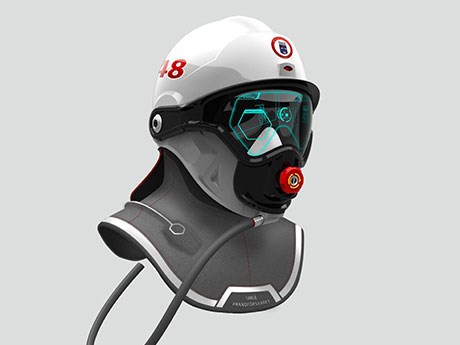Ten, 20 or 30 years from now, as mines go deeper, miners may look a lot more like astronauts, with breathing apparatus, cooling vests and high-tech helmets incorporating personal protective equipment and communication devices.
In anticipation of that day, the Centre for Excellence in Mining Innovation is embarking on a research and development project to determine how miners will need to be equipped to cope with the harsh environment of very deep mines.
“Two things are true,” noted CEMI president and CEO Doug Morrison. “Conditions in the mines will be much hotter as we go deeper and we will not be able to keep miners cool by use of ventilation alone. Secondly, it will probably not be possible in the next generation to totally eliminate people from the underground environment. Therefore, we will have people underground in very difficult conditions and we have to come up with better equipment than we have at the present time to manage those conditions.”
Morrison acknowledges that mines today are still able to get by with the traditional coveralls, hard hat and personal protective equipment, but predicts that will change.
Ahead of the curve
“It’s one of those projects where we’re probably ahead of the curve, but we have to look ahead at what’s coming,” he said. “A lot of mines are already close to 8,000 feet and they’re all open at depth. Very soon, we will be in a situation where we need (to rethink how miners are dressed and equipped).”
According to Morrison, the industry will likely carry on with efforts to automate equipment and limit the number of people exposed to the harsh conditions of very deep mines, “but we don’t think it’s realistic to expect a situation where there will be nobody underground.”
Working with researchers from the Sudbury-based Northern Centre for Advanced Technology (NORCAT), the University of Quebec’s École de Technologie Superieure and Ryerson University, CEMI hopes to develop a coverall solution that will keep miners cool and a helmet that will replace the current hard hat, hearing and eye protection.
Morrison envisions a coverall solution similar to cooling vests used by military personnel, firefighters and athletes. The suits would have a network of capillaries filled with an antifreeze material such as glycol.
“Heat stress has been understood to be a problem for many years,” he noted.
To date, deep mines such as Agnico- Eagle’s La Ronde Mine in northwestern Quebec, and Xstrata Copper’s Kidd Mine in Timmins, both of which descend to 10,000 feet or more, use expensive refrigeration. Many more mines that aren’t as deep use mobile equipment with air-conditioned cabs.
However, with fewer people underground and more automated and teleoperated equipment in the mine of the future, we may not even need cabs, predicts Morrison.
“Eventually, you are going to want pieces of equipment that are automated and able to move material from place to place without manual intervention, and if you are going to have manual intervention on a machine only 10 per cent of the time, you’ll have a cab that is hardly ever used.”
In such a scenario, it might make more sense to have the cooling solution integrated with the operator’s personal equipment so it’s equally effective both inside and outside mobile equipment.
Rather than go to the expense of ventilating a deep mine with automated equipment and very few miners, it may make more sense to go with personal supplies of air stowed in lightweight canisters that can be resupplied as required at refuge stations or by redesigning mobile equipment to dispense air.
Communication devices
In addition to incorporating hard hat, hearing and eye protection, a miner’s helmet could include communication devices, computer displays and video cameras.
“If a miner underground has a problem in a particular location, he can get guidance and advice from someone on surface to solve the problem,” said Morrison. “And if there’s a camera on the helmet, he can show them what he’s looking at rather than waiting eight hours for someone to come down and solve the problem.”
The solution could also include instrumentation to monitor a miner’s health, including blood pressure, body temperature and breathing.
The primary researcher on the project is Dr. Sylvie Nadeau the University of Quebec’s École de Technologie Superieure. Also providing assistance is Dale Boucher of NORCAT, who will be able to tap space-based technologies through his work developing coring drills for NASA and the Canadian Space Agency.
Agnico-Eagle has expressed interest in the project. By the end of the year, Morrison hopes to recruit three companies to support the research.



